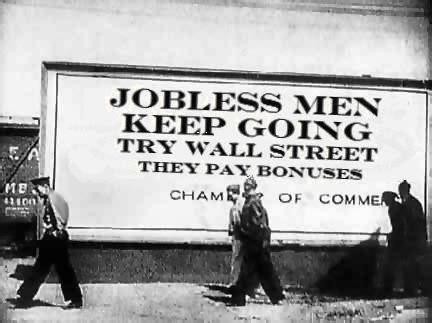Strategies to Stay Competitive and Interview-Ready During Extended Job Searches
Making the Most of an Unplanned Career Break
The tech industry continues to face challenging times, with layoffs affecting professionals at all levels of the industry. If you’re currently between roles, whether it’s been three months, six months, or longer, you’re not alone. Unfortunately, there’s still a perception that extended unemployment reflects poorly on the individual rather than industry conditions. Here’s how to turn an unplanned career break into a strategic advantage while preparing compelling stories for your next interview.
Reframe Your Career Break
I often see people list “career break” to cover a gap between roles. While people do this as a deliberate choice to recharge, you can also use this on your resume to reframe an extended job search. Simply listing “career break” on your resume isn’t enough. Be specific about what you’re doing with that time. Are you learning new technologies? Earning certifications? Developing new skills? This shows you’re staying engaged with industry developments and taking your professional growth seriously, even while job searching.
More importantly, each skill you develop gives you fresh material for interviews. When interviewers ask about recent learning or how you stay current with technology trends, you’ll have concrete examples: “During my career break, I dove deep into Kubernetes and earned my CKA certification. I also built a personal project using React 18’s new concurrent features to understand how they improve user experience.”
If you’re using “career break” to account for job search time, limit this approach to six months maximum unless you’re genuinely taking an extended, planned break. You can use the end of your “career break” time on your resume as an opportunity to restart your job hunt, looking fresh to recruiters.
Start a Consulting Company
Creating a consultancy demonstrates you’re still actively working and using your skills, even if you’re not employed full-time. Yes, building a consultancy is challenging, especially without strong existing connections, but it shows initiative and keeps you in the professional game.
In interviews, consulting experience provides rich storytelling opportunities. You can discuss how you navigated different client needs, adapted to various tech stacks, or solved problems with limited resources. “Working with three different clients taught me to assess legacy systems and propose pragmatic modernization strategies quickly” is far more compelling than explaining a gap in employment.
Be strategic about the contracts you accept, ensuring you can transition away if a full-time opportunity arises. Use any downtime between clients to develop new skills or pursue certifications that enhance your value proposition and give you additional interview talking points.
Build a Startup
Don’t let the complexity intimidate you; starting a startup can be as simple as developing an idea and creating a website. This approach works particularly well for senior leaders who want to demonstrate they’re still innovating and building.
The interview advantages here are enormous. When someone asks, “Tell me about your startup,” you have a natural opportunity to showcase technical decisions, product thinking, and problem-solving approaches. You can explain why you chose certain technologies, how you validated assumptions, what you learned about user experience, or how you approached scaling challenges. These conversations demonstrate both technical depth and business acumen.
Most startups fail, and hiring managers understand this. What they’ll appreciate is your initiative, the skills you’ve developed, and the concrete experiences you can discuss. Be prepared to explain your transition: “After eight months, I realized the market timing wasn’t right, but I learned invaluable lessons about modern deployment strategies and user research that I’m excited to bring to a larger team.”
Address the obvious question directly: “I’m ready to shelve the startup and focus entirely on this role. The experience taught me what I love about building products within a larger organization rather than going it alone.”
Contribute to Open Source Projects
Open source contribution keeps you coding, collaborating with teams, and engaging with the broader tech community. As a significant user of open source software, contributing back is both professionally beneficial and ethically sound.
This path creates specific technical stories for interviews. You can discuss code review processes, how you approached complex bug fixes, or how you collaborated with maintainers across time zones. “I contributed a performance optimization to [popular library] that reduced memory usage by 30%” is a concrete achievement that demonstrates both technical skill and impact.
While “open source contributor” might not carry the same weight as other options on your resume, it’s meaningful work that demonstrates ongoing skill development. Plus, becoming a key contributor to a popular project can lead to networking opportunities and potential job connections.
Volunteer Your Technical Skills
Consider leveraging your expertise for charitable organizations that need technical support. Many nonprofits struggle with outdated systems, a lack of digital infrastructure, or limited technical resources. Volunteering your skills provides several benefits:
- Real-world impact: You’re solving genuine problems for organizations, making a difference
- Portfolio building: These projects often involve diverse technical challenges and constraints
- Interview gold: “I built a volunteer management system for a local food bank that increased their efficiency by 40%” shows both technical capability and values alignment
- Leadership stories: Smaller organizations often give you more responsibility, providing examples of how you drive technical decisions and manage stakeholder relationships
- Problem-solving under constraints: Nonprofit projects typically involve limited budgets and resources, showcasing your ability to deliver value with creative solutions
When discussing volunteer work in interviews, focus on the technical challenges and business impact rather than just the charitable aspect. “Working with a limited hosting budget taught me to optimize for performance in ways I hadn’t considered in enterprise environments.”
Strategic Interview Messaging
Whatever approach you choose, be prepared to explain your transition back to full-time employment confidently. Frame your experience as intentional professional development: “I used this time to explore entrepreneurship and deepen my technical skills. Now I’m excited to bring these fresh perspectives and enhanced capabilities to a collaborative team environment.”
Each path gives you concrete examples of continued growth, problem-solving ability, and professional commitment. The key is having specific stories ready that demonstrate how your career break time made you a stronger candidate, not someone who’s been out of the game.
Remember, showing that you’ve remained productive and engaged during your career break demonstrates resilience, self-motivation, and commitment to your profession; qualities any employer would value. More importantly, you’ll walk into interviews with fresh experiences and genuine enthusiasm for what you’ve learned and built.
Originally published at https://kevingoldsmith.substack.com/p/making-the-most-of-an-unplanned-career



